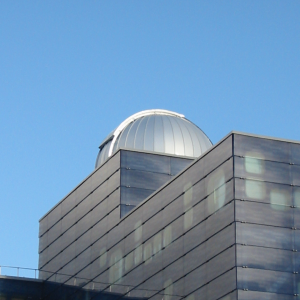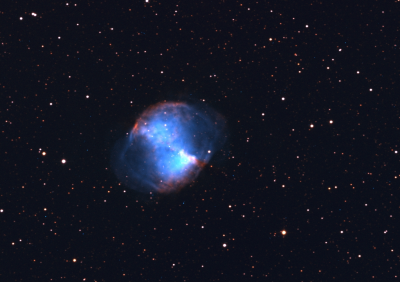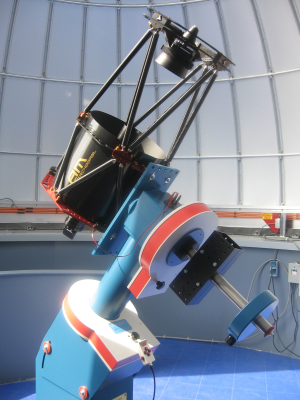Blaauw Observatory

Since 2008, the University of Groningen has had a real observatory on the Zernike Campus: the Blaauw Observatory. The observatory is placed on top of the Bernoulliborg building. Anyone driving to the Zernike Campus via Zonnelaan can see the gleaming dome from afar.
The purpose of the observatory is to give students experience in making astronomical observations, and to show the universe to the general public. For the latter, regular public evenings are organized, among other things.
The observatory is named after Groningen astronomer Adriaan Blaauw and was officially opened on 11 September 2008 by Rector Magnificus Zwarts.
Students at work
The University of Groningen is one of four places in the Netherlands where astronomy can be studied. To gain experience in astronomical research, students from Groningen travel to the Canary Islands every year. There, they can spend a week making observations with a professional telescope. In preparation, the students perform observations with the telescope of the Blaauw Observatory. As a result, they have already experienced for themselves what is involved in doing good astronomical research and are well prepared to start working with a large telescope.
Visit the Blaauw Observatory
The interested public can also visit the observatory. You can find more information about the public evenings here. During these evenings, you can marvel at the beauty of the universe. So if you have never seen the craters on the Moon, the rings of planet Saturn or objects far out in the universe, be sure to come along! And when it's not bright out, lectures will be held on our place in the universe.

The Blaauw Observatory
The observatory has a 40 cm reflecting telescope and is of the Ritchey-Chrétien type. It is one of the largest telescopes in the Netherlands. The telescope has high-quality optics and is ideally suited for photographing objects deep in the universe. Photographing is done with a special digital camera that is extremely sensitive to faint objects. The purchase of the telescope was made possible by a grant from the Gratama foundation. More information about the telescope can be found here.
The telescope is in a dome with a diameter of 6.5 metres and can accommodate 25 people. The dome was supplied by US company Ashdome. The telescope can be operated from a small control room. There is also a small spectroscope room. Light from the telescope can be directed via fibre optics to this room to record spectra. Students can then determine the chemical composition of, for example, stars, galaxies, or the sun.

